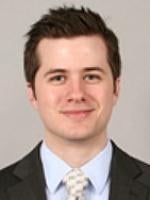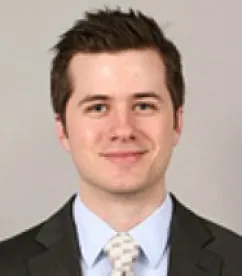In a highly-anticipated case that had the potential to drastically change the patent landscape surrounding computer-implemented inventions, in Alice Corp. v. CLS Bank Int’l1 the Supreme Court took a measured approach to the issue of patent-eligibility of computer-implemented inventions under 35 U.S.C. § 101. Rather than declare all computer-implemented inventions categorically eligible or ineligible for patent protection, the Court limited its analysis to the particular computer-implemented system, method, and computer-readable media claims at issue. Specifically, the Court adopted the two-part patent-eligibility test that it established in Mayo2, and held that the particular claims at issue failed that test and were invalid as being directed to a patent-ineligible abstract idea3. In doing so, the Court expressly acknowledged that many computer-implemented inventions remain eligible for patent protection.4 The Court further provided certain guidance on how to patent protect computer-implemented inventions without running afoul of the longstanding abstract idea exception.
At issue in Alice were patents directed to "facilitat[ing] the exchange of financial obligations between two parties by using a computer system as a third-party intermediary."5 The asserted claims included system, method, and computer-readable media claims, each of which was implemented using a computer. The Court unanimously held that all of the claims at issue were "drawn to the abstract idea of intermediated settlement, and that merely requiring generic computer implementation fails to transform the abstract idea into a patent-eligible invention."6 In reaching this decision, the Court adopted the two-part test established by the Court in Mayo to determine whether the claims were directed to a patent-ineligible abstract idea.
Part 1—Abstract Idea
The first part of the two-part test simply asks whether the claims at issue are directed to an abstract idea.7 Even though the Court explicitly identified the danger of the abstract idea exception—namely, that every claim at some level could be boiled down to an abstract idea and considered patent-ineligible—the Court expressly declined to provide any further guidance as to how one can determine whether a particular claim is directed to an abstract idea.8 Instead, the Court compared the subject matter of the claims at issue to the subject matter of the claims it has held to be patent-ineligible or patent-eligible in prior cases in which the Court considered the abstract idea exception.9
In applying the first part of the test to the claims at issue, the Court favorably compared the claims to those found patent-ineligible in Bilski, and stated that "the concept of intermediated settlement is a fundamental economic practice long prevalent in our system of commerce."10 The Court additionally reasoned that the "use of a third-party intermediary . . . is also a building block of the modern economy."11 The Court concluded that "intermediated settlement, like hedging, is an ‘abstract idea’ beyond the scope of §101."12
Interestingly, the Court’s determination of whether the claims were directed to an abstract idea included a determination of whether the claims were directed to principles that are "well-known" or "long prevalent" in the fields of economics and finance. Such a consideration of whether the claims were directed to longstanding principles well-known in these fields appears to at least partially tie the patent-eligibility analysis to the novelty and obviousness analyses. This is even more evident by the Court’s search for an "inventive concept" in the second part of the two-part test which, if found, may move a claim reciting an abstract idea into the realm of patentable subject matter.
Part 2—Inventive Concept
If a claim is found to be directed to an abstract idea, the second part of the two-part test is "a search for an ‘inventive concept,’" which the Court defined as "an element or combination of elements that is sufficient to ensure that the patent in practice amounts to significantly more than a patent upon the [ineligible concept] itself."13 Put differently, the Court stated that a "claim that recites an abstract idea must include ‘additional features’ to ensure ‘that the [claim] is more than a drafting effort designed to monopolize the [abstract idea].’"14
In applying the second part of the test to the claims at issue, the Court found that aside from the recitation of the above-identified abstract idea, the claims did not include "‘enough’ to transform [a patent-ineligible] abstract idea into a patent-eligible invention."15 Specifically, with respect to the tying of certain claim elements to a general purpose computer, the Court stated that "the claims at issue amount to nothing significantly more than an instruction to apply the abstract idea of intermediated settlement using some unspecified, generic computer,"16and that simply reciting a "generic computer [in the claims] cannot transform a patent-ineligible abstract idea into a patent-eligible invention."17
System, Method, and Computer-Readable Media Claims Rise and Fall Together
While the Court’s analysis focused on the method claims, for similar reasons the Court also found the system and computer-readable media claims to be patent-ineligible. Specifically, the Court stated that the system and computer-readable media claims were "no different from the method claims in substance."18 The Court was surprisingly silent regarding Bilski’s machine-or-transformation test, which asks whether a claimed process "is tied to a particular machine" or "transforms a particular article into a different state or thing."19 As recently as Mayo, the Court indicated that the machine-or-transformation test is a "useful clue" for determining whether a process is patent-eligible.20 Here, the Court appeared to simply disregard the computer hardware elements of the claims, dismissing them as generic computer components.
Implications and Considerations
While this decision limits the patent-eligibility of certain computer-implemented inventions that merely apply an abstract idea using a general purpose computer, it in no way limits the patent-eligibility of all computer-implemented inventions. Rather, the Court explicitly pointed out that many computer-implemented inventions are still eligible for patent protection after Alice.
While the impact of Alice will largely be determined by its interpretation and application by the Federal Circuit and the U.S. Patent Office, certain practice tips are apparent from the Court’s opinion. In light of the Court’s apparent conflation of the patent-eligibility analysis with the novelty and obviousness analyses, to avoid a claim being interpreted as reciting an abstract idea, an applicant should draft the claim including language relatively specific to the novel aspects of the invention and that is relatively narrowly-tailored to those particular novel aspects. Applicants should avoid vague claim language and attempting to obtain overly broad claims that the Patent Office or a court could read as encompassing a "basic tool[] of scientific and technological work," a "building block of human ingenuity," a "fundamental economic practice," or "building block of the modern economy."
Additionally, because a claim reciting a patent-ineligible abstract idea will not be transformed into a patent-eligible invention by simply tying that patent-ineligible abstract idea to a general purpose computer, to the extent possible, applicants should tie each claim element to a particular physical device other than (or in addition to) a general purpose computer.
1 No. 13–298 (S. Ct. June 19, 2014).
2 Mayo Collaborative Servs. v. Prometheus Labs., Inc., 132 S. Ct. 1289, 1296–98 (S. Ct. 2012).
3 Alice, No. 13–298, slip op. at 1.
4 Id. at 13–14 ("There is no dispute that . . . many computer-implemented claims are formally addressed to patent-eligible subject matter.").
5 Id. at 2.
6 Id. at 1.
7 Id. at 7.
8 Id. at 10 ("[W]e need not labor to delimit the precise contours of the ‘abstract ideas’ category in this case.").
9 Id. at 7–10. In Gottschalk v. Benson, the Court held that a claim directed to a method of performing a mathematical formula was directed to a patent-ineligible abstract idea. 409 U.S. 63, 71–72 (1972). In Parker v. Flook, the Court held that a claim directed to a method of performing a mathematical formula and using the result obtained from performing the mathematical formula to update a variable was directed to a patent-ineligible abstract idea. 437 U.S. 584, 594–95 (1978). In Diamond v. Diehr, the Court held that a method for curing synthetic rubber that includes the computerized use of a mathematical formula was directed to patent-eligible subject matter. 450 U.S. 175, 182–84 (1981). In Bilski v. Kappos, the Court held that a claim directed to a method of hedging risk was directed to a patent-ineligible abstract idea. 130 S. Ct 3218, 3230–31 (2010).
10 Alice, No. 13–298, slip op. at 10 (emphasis added) (internal quotations omitted).
11 Id. (emphasis added).
12 Id.
13 Id. at 7 (internal quotations omitted).
14 Id. at 11.
15 Id. at 15–16.
16 Id. at 15 (internal quotations omitted).
17 Id. at 13.
18 Id. at 16.
19 Bilski, 130 S. Ct at 3225–27.
20 Mayo, 132 S. Ct. at 1303 (S. Ct. 2012).




 />i
/>i

